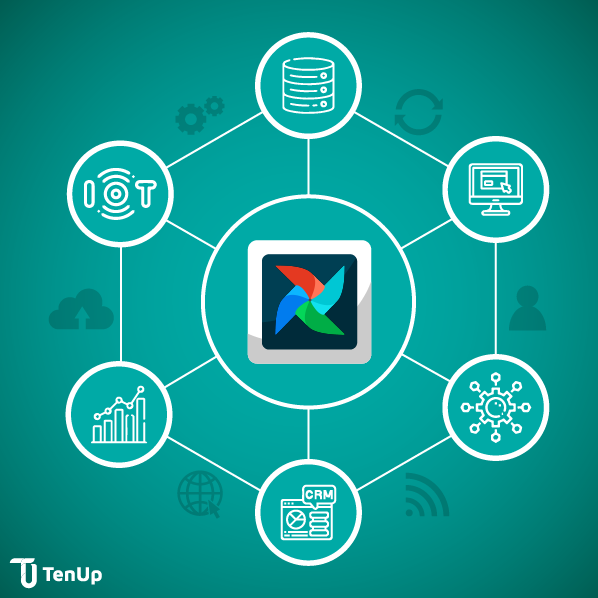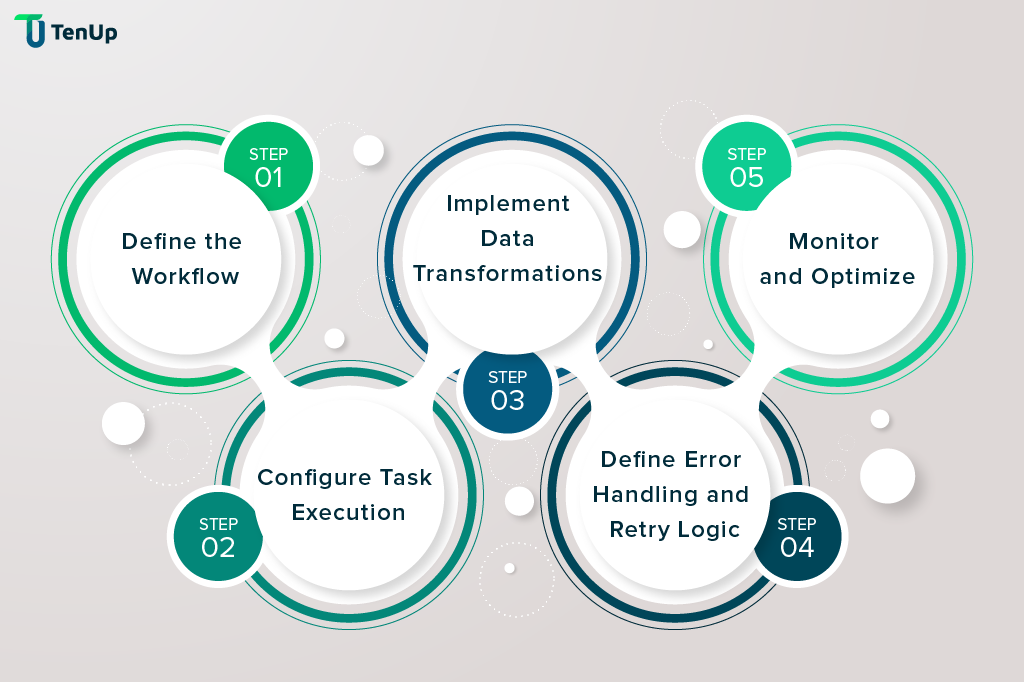#DataEngineering#Pipelines
In this digital age, where data integration tools and platforms have become the backbone of successful organizations, Apache Airflow stands out as a true champion of efficient data pipeline management. Imagine a symphony of related tasks orchestrated with precision, enabling the seamless flow of information, real-time data processing, and automated data integration. Buckle up and embark on an exhilarating journey as we explore the key features of Apache Airflow and unlock the secrets to crafting data pipelines that transform businesses.
Venturing into Apache Airflow, we discover an innovative solution that dances effortlessly between automation and customization. Its prowess lies in the fusion of robust features, an intuitive user interface, and the power to conquer complex data challenges easily.


Apache Airflow is an open-source platform designed for programmatically authoring, scheduling, and monitoring workflows. It provides a robust framework for managing and orchestrating complex data pipelines. With Apache Airflow, users can define tasks and their dependencies as Directed Acyclic Graphs (DAGs), allowing for a visual representation of the workflow structure.
At its core, Apache Airflow simplifies managing and automating various data-related tasks. It offers a unified interface that enables users to define, execute, and monitor workflows seamlessly. By utilizing the power of DAGs, Apache Airflow ensures that tasks are performed in the correct order, handling dependencies efficiently and enabling parallel execution when possible.
The platform has various features contributing to its effectiveness in data pipeline management. These features include advanced scheduling capabilities, task dependency management, error handling, and a web-based user interface for monitoring and tracking the progress of workflows.
Overall, Apache Airflow empowers users to design, automate, and efficiently manage their data pipelines. Its versatility and powerful features make it a valuable tool for orchestrating complex workflows, ensuring seamless data flow, and enabling efficient data integration and processing.
A data pipeline is extracting, transforming, and loading (ETL) data from various sources into a unified format for analysis or storage. It involves a series of related tasks that perform specific operations on the data, such as data extraction, transformation, validation, and loading. Data pipelines play a vital role in ensuring the seamless flow of information for real-time data processing and analytics.
Ready to embark on a seamless data integration journey? Contact TenUp to leverage their expertise in Apache Airflow and unlock the benefits of streamlined data pipelines. Experience the power of real-time data processing, automated integration, and scalable solutions.
Overall, Apache Airflow empowers users to design, automate, and efficiently manage their data pipelines. Its versatility and powerful features make it a valuable tool for orchestrating complex workflows, ensuring seamless data flow, and enabling efficient data integration and processing.
As one of the many powerful cloud data engineering tools, Apache Airflow plays a crucial role in ensuring that data pipelines are scalable, automated, and efficient. These tools are designed to support organizations in managing vast amounts of data with ease. Learn more about the broader benefits of cloud data engineering tools for scalable data processing and how they complement platforms like Apache Airflow.

Apache Airflow has emerged as a powerful solution for efficient data pipeline management, empowering organizations to streamline their data integration processes and gain valuable insights. With its key features like DAGs, task dependency management, and scheduling capabilities, Apache Airflow simplifies the design, execution, and monitoring of complex data pipelines.
By harnessing the benefits of data pipelines with Apache Airflow, organizations can enhance their data-driven decision-making processes, achieve real-time data processing, and automate data integration tasks for improved efficiency and accuracy.
Ready to elevate your data integration capabilities? Partner with TenUp for expert data engineering services and unlock the full potential of Apache Airflow. We can help you harness the power of real-time data processing, automated workflows, and seamless integration. Learn more about our data engineering services here!